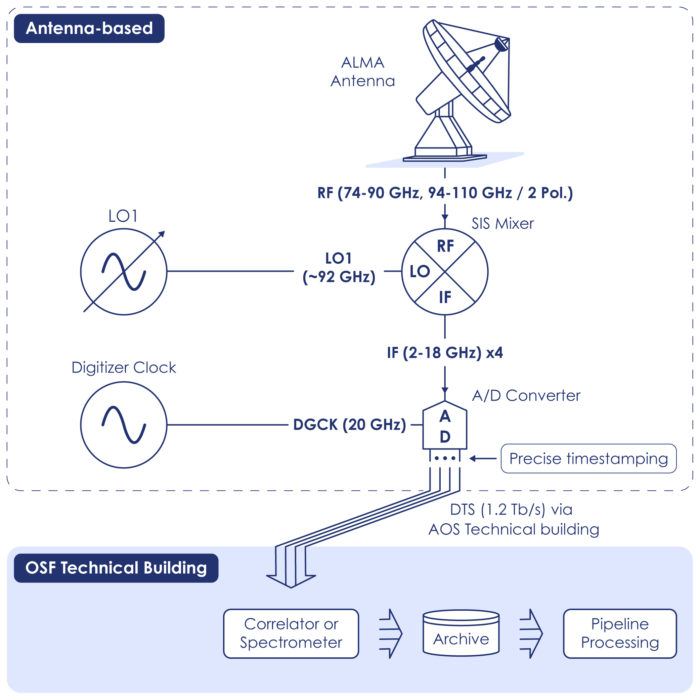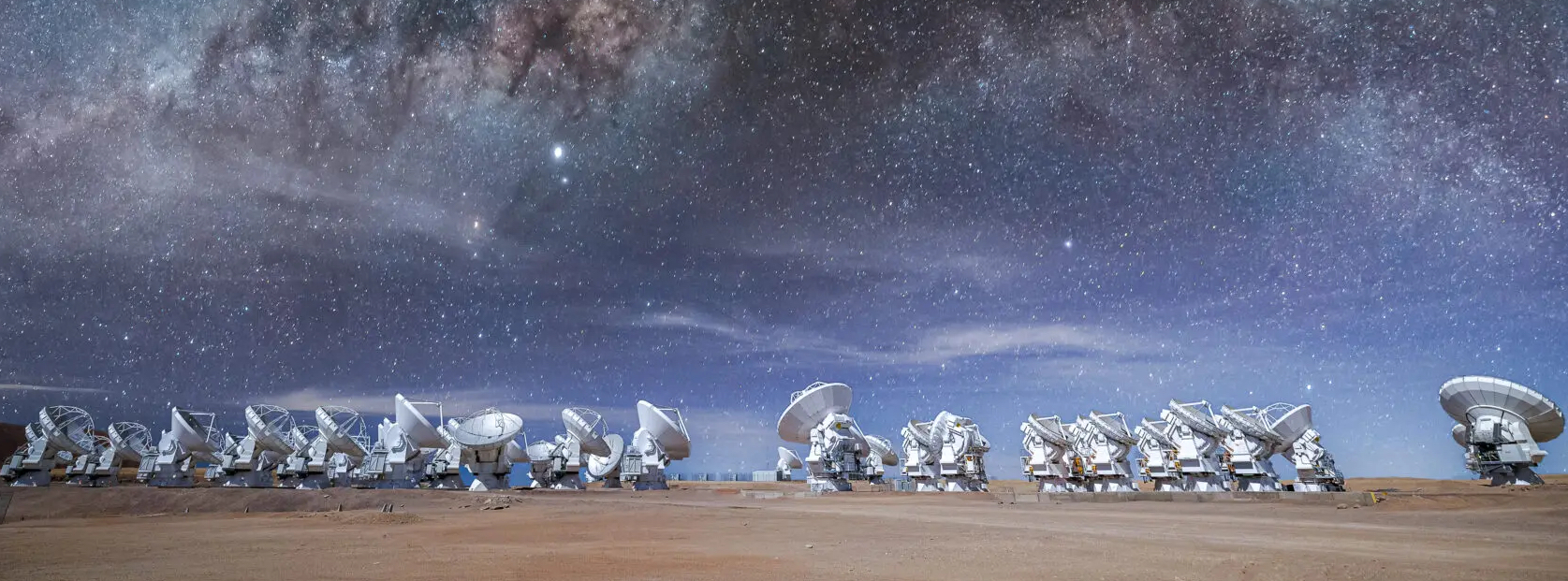WSU Technology
The Wideband Sensitivity Upgrade (WSU) was initially defined from the point of view of the analog receiving system since the scientific priorities in the ALMA Development Roadmap called for the increase of the receiver IF bandwidth by at least a factor of two. The current IF bandwidth of ALMA receivers is 4 GHz per sideband per polarization, for a total of 16 GHz. This bandwidth is digitized with 3-bit digitizers producing 96 Gbps of data from each of the 66 ALMA antennas. This data stream is transmitted using a proprietary system and protocol through fiber optics connecting each antenna with the correlator and ACA spectrometer located at the Array Operations Site (AOS) technical building at 5000 meters above sea level.
Considering technological feasibility and readiness:
- The final goal of the bandwidth increase is an increase by a factor of 4, with 16 GHz per sideband per polarization for a total of 64 GHz. Initially, this will be a factor of 2.
- This bandwidth will be accommodated within the 0-20 GHz IF frequency range and digitizers will sample the analog data at a 40 Giga-Sample per second (GSps) sampling rate with 6 bits per sample.
- This will produce data rates of 960 Gbps to which additional information will be added for monitoring and control. The data transmission system (DTS) for the WSU will be based on standard Ethernet using 400 GbE technology. To keep the design simple and expandable, the DTS will be implemented with four 400 Gigabit Ethernet (GbE) data streams, one for each sideband and polarization, that will be transmitted on the same fiber using wavelength multiplexing.
- The data from each antenna will be sent to the Operations Support Facility (OSF) technical building at about 2900 meters, approximately 30 km distant. New fiber optics will be installed between the AOS and OSF to support this data transfer at these very high speeds.
- A new state-of-the-art correlator (Advanced Technology ALMA Correlator / ATAC) based on FPGA technology will be installed at the OSF in a new correlator room, which will improve accessibility, simplify maintenance, and relax power and other operational constraints, among other benefits.
- A new spectrometer for the Total Power Array (Total Power GPU Spectrometer) will be built using GPU technology and also installed at the OSF.

ATAC and TPGS will be able to process the whole instantaneous bandwidth at full spectral resolution, supporting key WSU science cases. ATAC will process data with more bits than the current ALMA correlator, increasing the system's digital efficiency and the higher number of bits used by the digitizers. The WSU will then provide three major improvements:
- Increased receiver bandwidth.
- Improved sensitivity (i.e., better receivers and improved digital efficiency).
- Increased spectral tuning grasp (i.e., no need to trade off bandwidth for spectral resolution).
The impact of the WSU on software is two-fold. On the one hand, the increased receiver bandwidth needs an update of the data acquisition software and processes, such as online calibration, among others. On the other hand, the data rates generated downstream from the correlator will increase significantly in some extreme cases, with a significant impact on the data processing system and archive. The impact of the WSU on computing and science operations subsystems has been studied in detail and initial concepts towards WSU implementation have been outlined.
